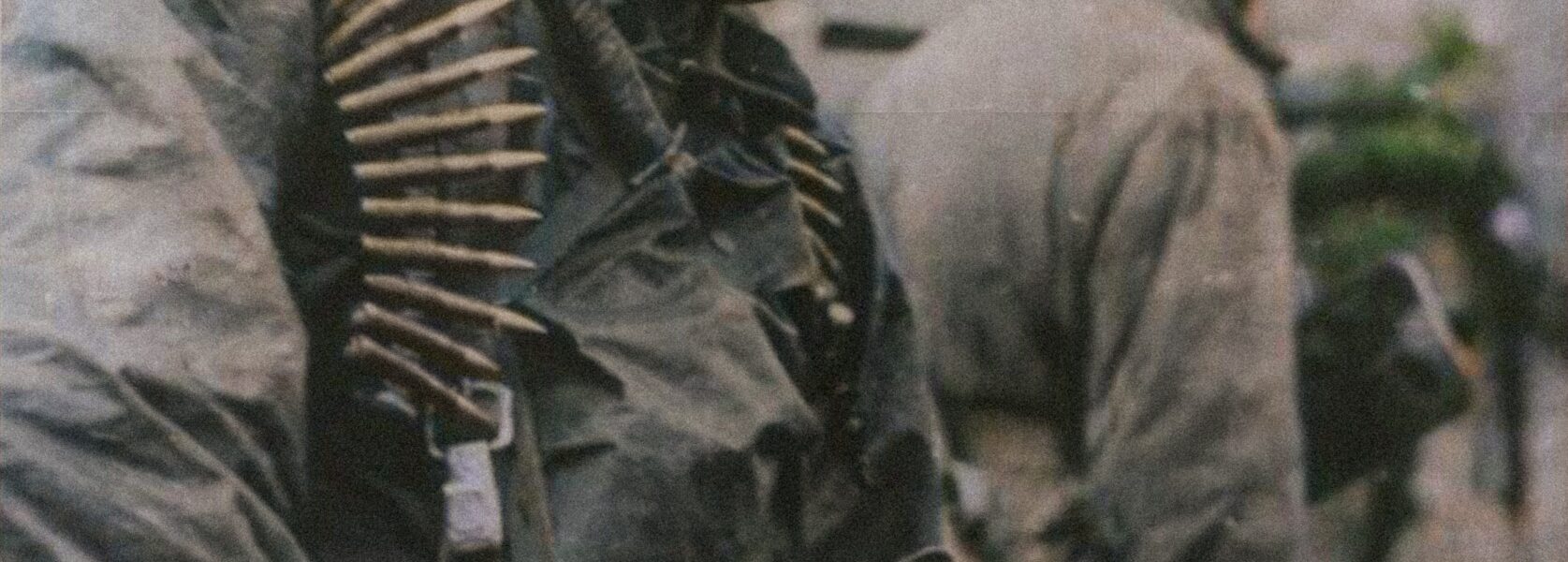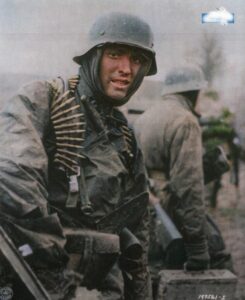Determined in the Ardennes: German soldiers transport supplies in the harsh winter, December 1944!
December 1944 marked one of the most intense and challenging periods of World War II. In the midst of a bitterly cold winter, German soldiers fought during the Battle of the Bulge, the Wehrmacht’s final major offensive on the Western Front. This battle, also known as the “Rundstedt Offensive” or “Battle of the Bulge,” demanded not only military skill but also tremendous stamina and determination from the soldiers.
The Ardennes, a wooded and hilly region, presented the soldiers with immense challenges. Temperatures dropped well below freezing, and thick snow covered the terrain. In these adverse conditions, the soldiers not only had to fight but also transport vital supplies such as ammunition, food, and medical supplies to the front lines. An image many associate with the Battle of the Bulge shows a German soldier carrying supplies forward alongside a comrade. It symbolizes the troops’ determination and perseverance, even under extreme conditions.
The Battle of the Bulge began on December 16, 1944, with the goal of breaking through the Allied lines and reaching the port of Antwerp. This was intended to disrupt the Allied supply lines and force them into a negotiated peace. The German leadership relied on the element of surprise, hoping that the difficult terrain and bad weather, which neutralized Allied air superiority, would work in their favor.
German infantry units, supported by tanks such as the Panzerkampfwagen VI Tiger and the Panzerkampfwagen V Panther, moved through the dense undergrowth of the Ardennes. The transport of supplies was crucial, as the offensive would have quickly stalled without adequate supplies. Images of soldiers transporting supplies under difficult conditions are a testament to the logistical effort and physical strain associated with the offensive.
The soldiers at the front were not just fighters, but also people who struggled with hunger, cold, and exhaustion. Many were young and inexperienced, while others had already accumulated years of combat experience. Camaraderie played a crucial role in enduring the hardships. The shared transport of supplies, as depicted in the aforementioned image, demonstrates the soldiers’ solidarity and cooperation.
But despite all their determination, the German troops faced significant problems. A lack of fuel, the superiority of the Allied forces, and the increasing demoralization of many units ultimately led to the failure of the offensive. In the end, the German troops were forced to withdraw, suffering heavy losses.
The Battle of the Bulge was the last major German offensive on the Western Front and marked a turning point in the war. For the Allies, the victory in the Ardennes marked the definitive beginning of the advance into Germany. For the German soldiers who participated in this offensive, the memory of the hardships and deprivations they had endured in the Ardennes forests remained.
Today, images and reports commemorate the events of that time. They depict not only the military aspects of the battle, but also the human side of the war. The image of the German soldier carrying supplies through the snow alongside his comrade is a symbol of the hardship and determination the soldiers demonstrated during that brutal winter.
Conclusion
The Battle of the Bulge was a pivotal moment in World War II, marked by strategic challenges and human suffering. The German soldiers fighting in the snowy forests of the Ardennes became symbols of determination and the will to survive during one of the darkest hours in history. Their experiences remind us of the cruelty of war and the unimaginable sacrifices it exacted.






